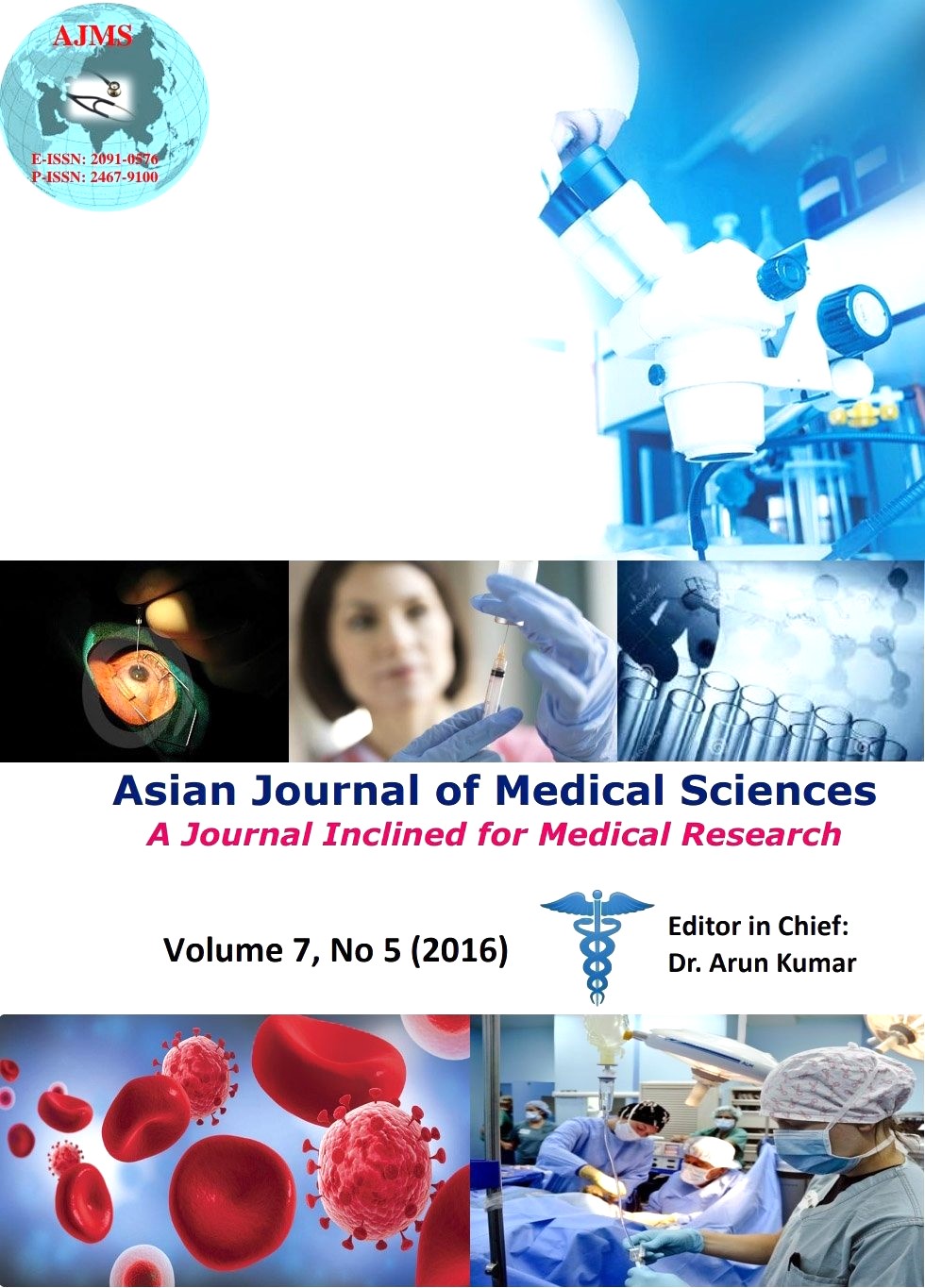A study on neurodevelopmental outcome and its associated risk factors in very low birth weight babies in a tertiary care teaching hospital in Kolkata
Keywords:
Follow up, Neurodevelopment, Risk factors, Very low birth weightAbstract
Background: Very low birth weight babies are very fragile in nature and usually undergone through stormy neonatal period, which affects significantly their neurodevelopmental outcome in long term basis.
Aims and Objectives: 1. Assessment of neurodevelopmental outcome in very low birth weight (VLBW) babies at 12 month corrected gestational age. 2. Study of risk factors associated with such outcome.
Materials and Methods: VLBW babies without any major congenital anomaly were included in this study. They were followed up in high risk clinic upto 12 month corrected gestational age. In follow up visits, assessment of tone was done by Amiel Tiesonmethod and 180 degree flip test. Developmental screening was done by Denver Developmental Screening Test (DDST II).Data obtained from this study were entered in Microsoft Excel and subsequently analysed with the help of Epi Info (TM) 3.5.3 software.
Results: 24.4% among the study population showed neurodevelopmental abnormalities. Of them, 22.2% VLBW infants had muscle tone abnormality; 15.6% were suspect in gross motor development, 8.9% were suspect in fine motor, 11.1% were suspect in personal – social and 8.9% were suspect in language development, which were statistically significant. On assessment of risk factors, it was found that low birth weight, prematurity, non-use of antenatal corticosteroid, hypoglycaemia, intraventricular haemorrhage, sepsis, jaundice, mechanical ventilation, intra uterine growth retardation were significantly associated with various strata of neurodevelopmental outcome.
Conclusion: VLBW babies are very prone to develop neurodevelopmental complications. Taking proper care regarding above said risk factors can reduce such complications. Also these babies should follow up properly to detect complication/s at earliest, and take “early intervention’’ steps.
Asian Journal of Medical Sciences Vol.7(5) 2016 61-69
Downloads
Downloads
Published
How to Cite
Issue
Section
License
Authors who publish with this journal agree to the following terms:
- The journal holds copyright and publishes the work under a Creative Commons CC-BY-NC license that permits use, distribution and reprduction in any medium, provided the original work is properly cited and is not used for commercial purposes. The journal should be recognised as the original publisher of this work.
- Authors are able to enter into separate, additional contractual arrangements for the non-exclusive distribution of the journal's published version of the work (e.g., post it to an institutional repository or publish it in a book), with an acknowledgement of its initial publication in this journal.
- Authors are permitted and encouraged to post their work online (e.g., in institutional repositories or on their website) prior to and during the submission process, as it can lead to productive exchanges, as well as earlier and greater citation of published work (See The Effect of Open Access).




